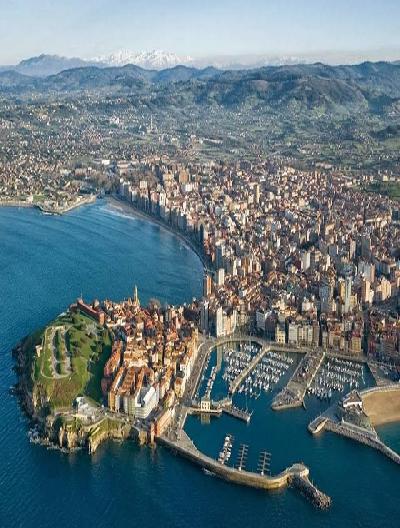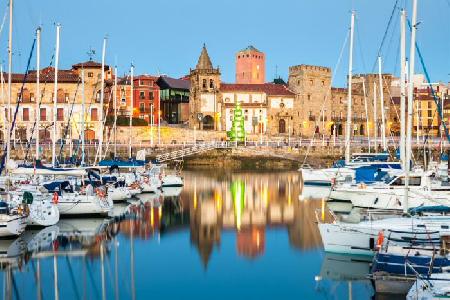 Gijón is a port city in Spain with a rich history located in the north of the country known as the maritime capital and one of the industrial centers. Has a population of 280,000 people.
Gijón is a port city in Spain with a rich history located in the north of the country known as the maritime capital and one of the industrial centers. Has a population of 280,000 people.
Gijón is located in the center of the Asturian coast, with the towns of Carreño and Sierra. It is interesting that the history of the city dates back to the Roman Empire, when it was one of the largest ports in the country. In those days, the city was called "Hiija".
Gijón, like other Spanish cities, is developing rapidly, but there are still many more historical buildings than glass skyscrapers and modern offices. There are not as many tourists as in Barcelona or Madrid, which makes it the perfect city for lovers of peace and tranquility.
Labor City of Culture:
Laboral Ciudad de la Cultura is the largest building in Spain (270,000 square meters) and the most important of those built in the 20th century (1945-1956).
Atlantic Botanical Garden:
The Atlantic Botanical Garden is one of the most unique places in Gijón. Unlike other gardens and parks in Spain, there is also a museum component, which makes visiting the botanical garden interesting for children.
Gijón Port:

The Port of Gijón is one of the largest in Spain. Its first pier was built in the late fifteenth century. Two centuries later, Gijón obtained the right to trade with the Spanish colonies in America. And at the end of the 19th century, the port of Gijón was the first port in Spain to unload coal. Today, around 3,000 ships enter the port of Gijón annually. And its cargo volume exceeds 17 million tons. Visit El Musel and cruises of any displacement.
The highlands of Santa Catalina:
The Santa Catalina Highlands, a former military setting, has an auditorium, cafeteria, and playground. From the top you can enjoy a great view of the coast. To the east you can see the San Lorenzo beach with the mouth of the Piles river and Mount La Providencia. To the west you can see the port, the Poniente beach, the aquarium and the thalassic center. Here is also one of the most important monuments in Gijón, a sculpture by Eduardo Chillida called "Elogio del Horizonte".
Winter festival:
This festival is celebrated on the third Saturday of February. The festival was created so that families who spent summers outside Gijón producing and selling ice cream in other cities in Spain could also spend the holidays together. One of the most outstanding and colorful features of the festival is the flower bazaar, during which all the participants in the festival dress in typical costumes from the places where their ice cream parlors are located.
